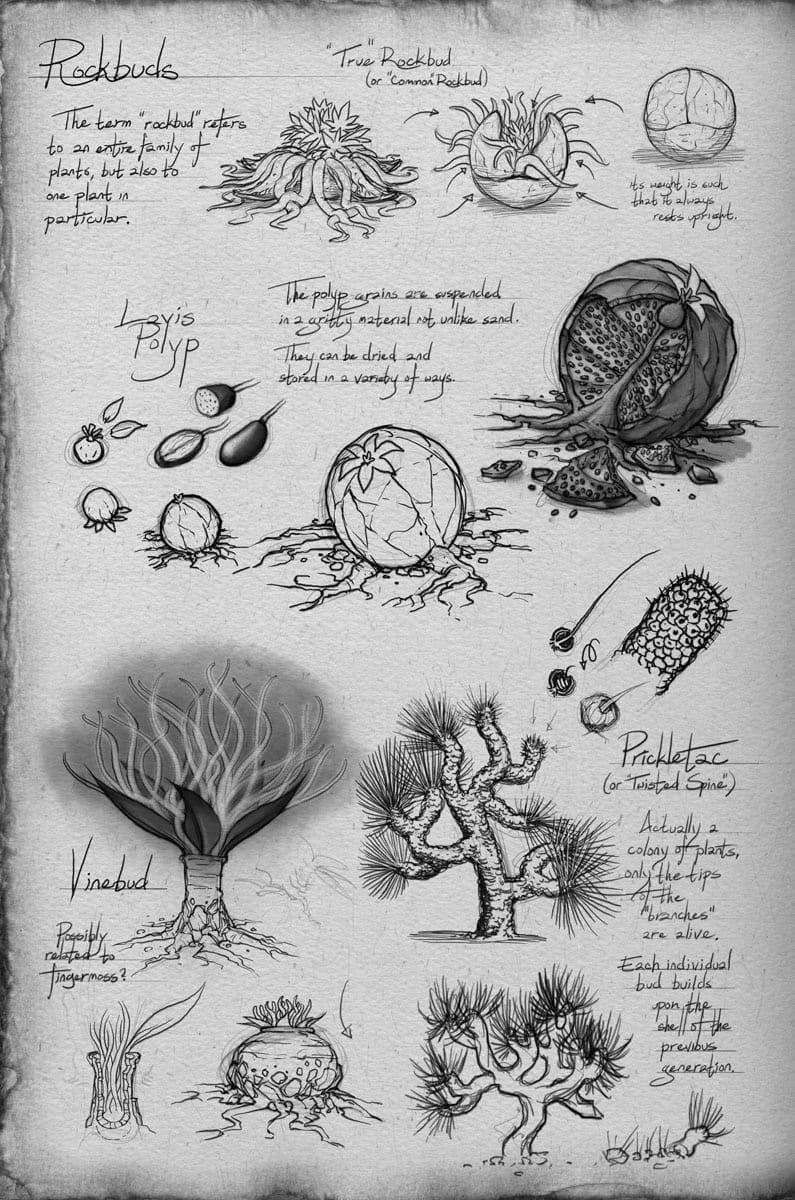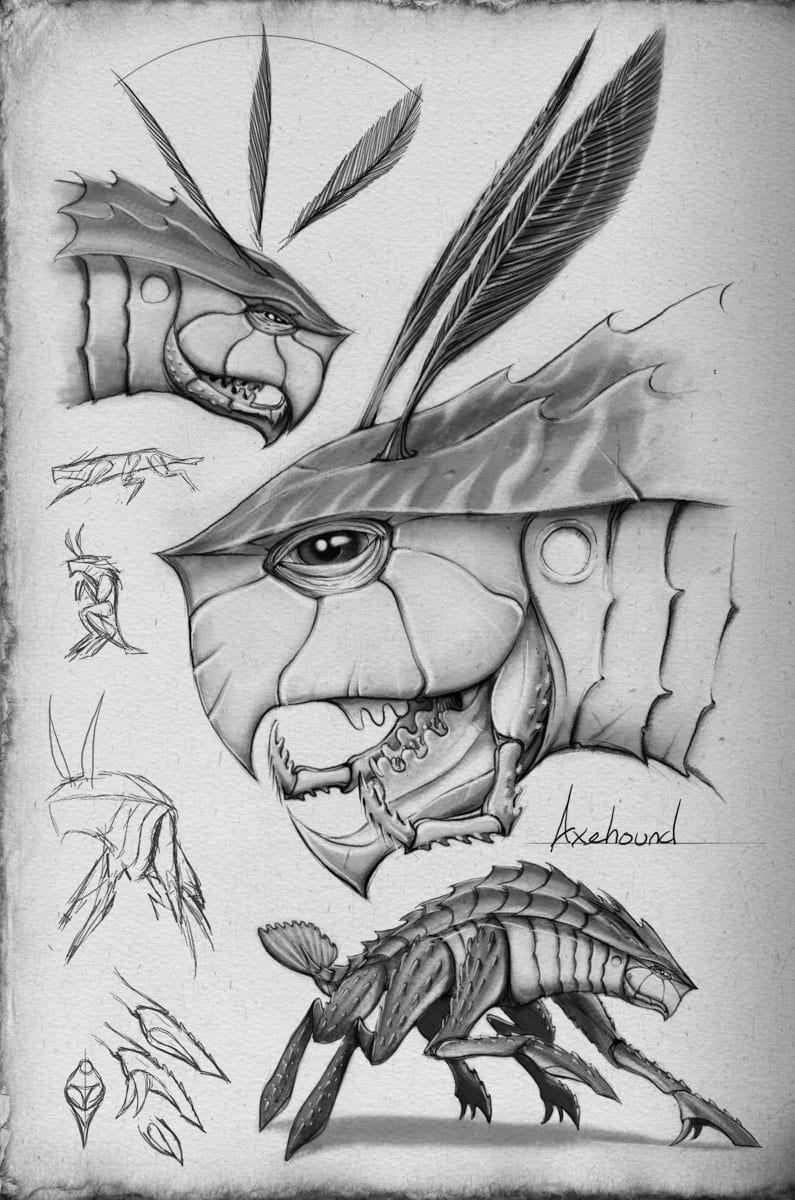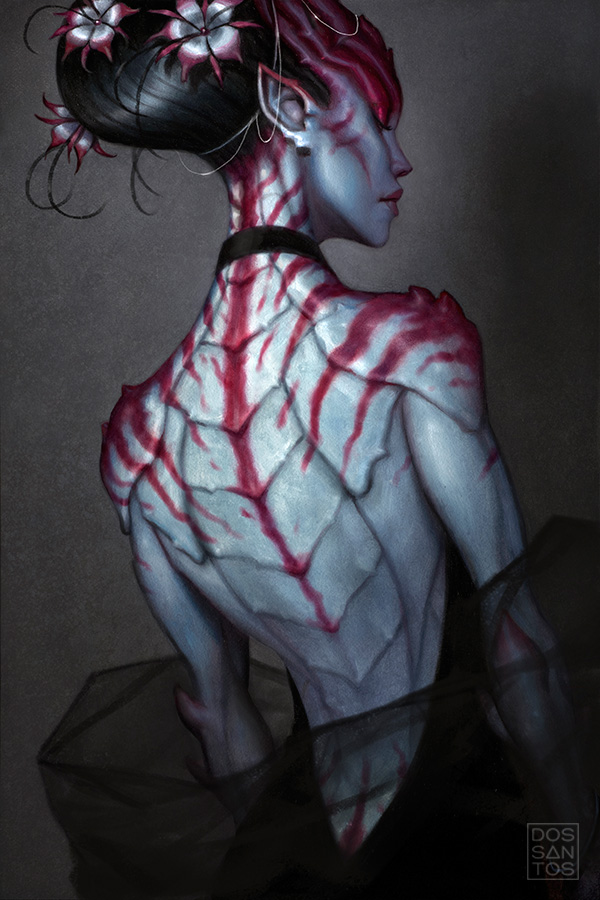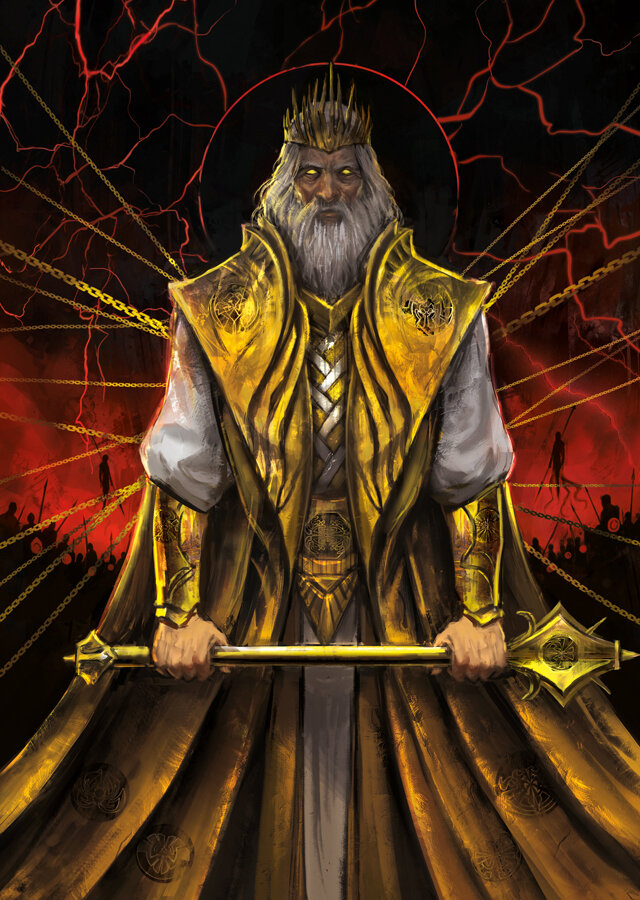Roshar
Roshar is a planet in the cosmere and one of thirteen planets in the Rosharan system. It is also the name of the supercontinent that contains all of the planet's known inhabitants It is the second planet from the system's sun, orbiting between Ashyn and Braize, and it has three moons. People from Roshar are called Rosharans. The planet is particularly notable due to the activity of several Shards of Adonalsium in the area and the various forms of magic used by its residents, including Surgebinding through the use of Stormlight.
Rosharan Geography and Ecology
At one point in Roshar's past there were no large landmasses. The supercontinent was designed to follow the shape of a Julia set (a mathematical formula that gives a geometrical pattern when given a seed number). It is the only continent on the planet, though not necessarily the only landmass.
Highstorms
A highstorm is a massively Invested hurricane on the planet of Roshar. They occur once every few days, or at the command of Stormfather, and move from stormward to leeward (East to West), starting at the Origin. East of Roshar, the highstorms are incredibly destructive. They progress across the continent, though they weaken gradually as they cross, and are mostly broken by the mountains east of Shinovar. This weakness is caused by a combination of being over land instead of water, and infusing spheres with Stormlight.
Climate
With the exception of Shinovar and the occasional well-sheltered lait, all of Roshar is frequently ravaged by powerful highstorms, massive hurricanes travelling from east to west. These storms come frequently and, though they do not appear to follow a simple pattern, stormwardens are able to accurately predict their schedule through complex mathematics. As a result, Shinovar is the only place on Roshar that has soil. A highstorm consists of a high altitude, wide-spread cumulonimbus, scraping the top of Roshar's troposphere; they can be derecho-like storms bringing heavy rain and strong winds.
The one consistent aspect of the Rosharan climate is the Weeping. The Weeping occurs every five hundred days and consists of four weeks of steady crem-free rain. The middle day of those four weeks is known as the Lightday and alternates between being one clear day in the midst of the rain and being a high storm. There are typically fewer highstorms in the weeks leading up to the Weeping. The seasons following the weeping typically have weaker storms, making them good for farming. Due to having zero obliquity, Roshar does not experience true seasons, with them instead simply being defined by current temperature, climate, and storms, unrelated to irradiance. These seasons are relatively random, and are often quite short, usually lasting only a few weeks. They can be roughly predicted by stormwardens. Seasons are primarily defined by changes in the storms. Due to not being caused by axial tilt, they can vary greatly even between relatively nearby nations on the same hemisphere.
Spren
Among many factors that make Roshar unique among other cosmere worlds is the overabundance of spren. Spren are small pieces of Investiture that have acquired sentience - and, in some cases, sapience - through the influence of Roshar's living creatures. They are a mix of different Shardic Investiture, mainly Honor and Cultivation, and exist mostly in the Cognitive Realm. However, they can and will often become partially visible in the Physical Realm, and some transition there entirely.
Three main groups of spren can be recognized. The nature spren correspond to various natural phenomena, such as windspren or flamespren, which appear in the presence of wind and fire respectively. Emotion spren are attracted to emotions, such as fearspren appearing when one is afraid or gloryspren for people who feel intense pride. However, a natural phenomenon or an emotion will not necessarily summon a spren, as they may not be present in the physical place's Cognitive equivalent.
The third group of spren are so-called true spren. Those spren are all sentient, and have an organized society in the Cognitive Realm. They transition to the Physical Realm only when searching for a prospective Knight Radiant to bond, as the shift robs them of most of their higher functions, which they reclaim through forming a Nahel bond. The Radiant spren seem to represent higher concepts, such as honor for the honorspren or truth and lies for Cryptics. This being said, only some true spren are Radiant spren.
In addition to those, there is a number of unique spren who are far more powerful than others. Among those is the Nightwatcher, who can grant boons and curses; the Stormfather, who controls the highstorms; the Sibling, who controls the tower-city of Urithiru.
Ecology
The shape and form of Rosharan ecology is influenced by four major factors: lower gravity, higher oxygen content, highstorms, and spren. The higher oxygen content and the lower gravity permit the existence of megafauna, while several species of animals are capable of forming spren bonds, further augmenting their capabilities. However, the most visually notable feature of Rosharan ecology is the way vast majority of them adapted to highstorms. Multiple species of both flora and fauna have developed shells to protect themselves from extreme weather, withdrawing into them whenever any danger approaches.
Flora
Rosharan flora had to adapt to several conditions, such as the severe weather and scarcity of soil.

The largest family of plants on Roshar are the rockbuds. They are characterized by having a thick outer shell from which they take their name, and tendrils, which retract into the shell upon detecting danger. The Rosharan grass, which acts in this way, is likely another subspecies of rockbud, albeit close enough in appearance to Shin grass to retain the name. Similar mechanism has been developed by vinebuds, which grow from a sturdy, yet elastic stem and, rather than spreading their tendrils along the ground, waft them in the air, akin to anemones. Rocklily leaves are an essential component of the diet of chull larvae.
Further to the east, where the highstorms are the strongest, even such measures are not enough. There, plants grow mostly in sheltered areas, such as the chasms and laits, while remaining sparse in the open air. More fragile flora, such as vines and weeds, grow and flourish in such terrain, though some, like knobweed, seem to prefer flatlands, utilizing highstorms deliberately to spread.

Contrarily, in the west where highstorms are weakened by the mountain ranges, plants are much less sensitive to stimulation and retract their leaves more slowly.
Roshar does have larger flora. Some trees, including the aforementioned dalewillow, have trunks made of stone while others, such as the jella, augment their wooden bark by accumulating crem. Like rockbuds, they withdraw their fronds into the trunks when sensing danger. There are also species such as makam and cobwood, which appear to be sturdy enough to sustain highstorms without added protection.
Rosharan grass is known to move away from disruptions or vibrations, often fully retracting to protect itself. It is type of shallowly burrowed seed pod that has enough room to hold moisture and contain the coiled up leaf. They at most grow to around three feet tall. Seeds emerge from the leaf tip to either be consumed and redeposited as faeces, or carried and redesposited by the wind.
Fauna
Roshar contains a wide variety of fauna, most of which appears to be shelled. While most creatures are native to the world, some have been introduced into Roshar during human exodus from Ashyn, among them mammals and birds.
Like Rosharan flora, the animals of Roshar have also adapted to their unusual circumstances. Several species, including the largest, grow massive shells which can protect them from highstorms. Others hide in dens or, in case of small sarpenthyn, ooze between the cracks in the rock.
The largest known group of animals on Roshar are crustaceans. Those can be of various sizes, from finger-long to four-stories-high. They are all noted as having violet blood and multiple stages of life, with the initial stage being called a larva and the process of switching between stages called pupation. The creation of shells is aided by the presence of crem in the rain, which the creatures can process into minerals.
One of the largest crustacean family are cremlings, a group of tiny, multi-legged scavengers preying mostly on deceased animals, although they will also feed on uncovered plants after highstorms. Cremlings come in variety of colors, with different features, numbers of legs, and behaviours.

Other than the cremlings, Roshar also features a number of larger crustaceans that are nonetheless smaller than humans. This group includes predatory species, such as the axehound, herbivores like axehind, and near-cremling sized creatures like leggers and larkin, as well as species like crabs.
The largest family of animals on Roshar are known as greatshells, which exist both on land and in the seas. All greatshells possess gemhearts and utilize them to attract mandras to decrease their own weight. The land greatshells include domesticated herbivores known as chulls and two large predatory species, the chasmfiend and the extinct lanceryn. The marine greatshells include the yu-nerig, which comes on land to pupate and is known to feed on humans, and the Tai-na, the largest animals known to inhabit the cosmere. Their legs are said to be sixty feet long, while the body itself stretches hundreds of feet tall. The back of Tai-na, which sticks out above water, is an ecosystem of its own, inhabited by multiple species of plants and animals, as well as humans.

The santhid, a massive marine species with large shell and a number of tendrils, might be considered a greatshell, and houses its own ecosystem, much like the Tai-na; however, as they were considered half-mythical until very recently, it's impossible to state so with any certainty.
Chasmfiends are the largest known land animals on Roshar: at least twenty feet wide, six times the height of an adult man at their peak, and over twice as long. They are long and narrow, with a flattened, split tail reminescent of that of a crayfish. Like most of Rosharan fauna, they're crustaceans, with a carapace exoskeleton covering their entire body. Said carapace is dark violet (though it's possible that other colors can also occur), and extremely durable, being able to withstand even a hail of arrows. It covers the beast's back in a series of interlocking, upside-down-V-shaped plates with horn-like protrusions growing on the edges. Beneath it, the chasmfiend's blood and gore is purple, and smells of mold. The meat is edible for both humans and native fauna.
Rosharan Locals
Singers
The singers are a sapient species on Roshar, which humans call the parsh or parshmen. One such group of singers are the listeners. Singers communicate through special rhythms--hence them being called singers. Singers can bond various spren which change their forms.
Singers predate the humans as inhabitants of Roshar. Around the time of the Recreance, many of the singers had their Connection and Identity stolen, pieces of their souls ripped away. This made those singers docile and subservient, which humans called parshmen and used as slaves for millennia later. With the advent of the Everstorm, these singers were healed and restored.
Biology and Appearance

singer.
Singers are humanoid, but not entirely human-like. The most apparent sign of their alien nature is their skin; it's covered in marblings, swirls of various colors - red, black or white. Most singers have two-colored skin, either red-black or red-white; the marblings can appear in various way, both as delicate swirls and large, wind-swept patterns. There are singers whose skin has all three colors, but they are extremely rare. The color whitening at the edges is a sign of age. Their hair is typically orange or red -- colors that don't seem to naturally occur for Rosharan humans. There is a relationship between the color of singer hair and their individual marbling colors.
Apart from their multicolored skin, singers have other features that differentiate them from humans. They grow faster compared to humans but have slightly shorter lifespans.
Their bodies have carapace growing over some parts of them; where and how much depends on what form the singer is currently in, but they typically cover the head and the arms. Their carapace is held on to their body by a series of blue ligaments.
Their teeth are built differently than human ones; their molars allow them to chew through shells, and their metabolism is geared towards metabolizing it, allowing them to make better use of the local fauna. Their eyes are also inhuman - all black, with no whites in the corners and no visible iris. Singers have orange blood.
Like many local species, singers possess gemhearts, though theirs are clouded white, and fused to their sternum. Those gemhearts allow them to bond with spren, letting them change their forms, leading to a change in both appearance and some mental faculty.
History

envoyform.
The singers predate the arrival of humans on Roshar, having been created as part of the planet's natural ecosystem. After the Expulsion, in which mankind accidentally destroyed their homeworld, Ashyn, the ancient singers were ordered by their gods Honor and Cultivation to help the human refugees who arrived on their planet. These ancient singers were known as the Dawnsingers. Initially, the two species interacted peaceably, with some singers and humans even intermingling, creating Herdazians and the Unkalaki.
However, mankind's arrival also brought Odium, and conflict soon began. Humans, originally granted only the land of Shinovar, sought to expand, causing the conflict that would eventually come to be known as the First Desolation. During that time, the singers came to call humans "Voidbringers", as humans cannot hear the rhythms. In that conflict, spren eventually came to side with humans, leading to a sense of deep betrayal in the singers. It seems that the singers did something that caused the spren to turn on them.
At some point, Honor and Cultivation sided with the humans, while singers came to work with Odium, who granted their most valiant warriors immortality and great power to fight against the humans. This power made them into Cognitive Shadows, and allowed them to be reborn by possessing the bodies of other singers. Those immortal singers came to be known as the Fused. The Fused became both gods and rulers of the singers, despising mankind, wanting humans wiped off Roshar regardless of the cost.
To combat the Fused, Honor created the ten Heralds, who would imprison them on Braize until one of them broke, whereupon the Fused and Heralds would return to Roshar and a new Desolation would begin. The cycle continued for many centuries until finally, at the Aharietiam, the Heralds decided to leave only the strongest among them, Taln, to face the torture alone.
Not all singers, however, were eager to battle mankind continuously for Odium. One such group, the Last Legion, abandoned the Regal forms granted to them by Odium and left for the Shattered Plains, where they would settled, far from the ongoing conflict. They would eventually dub themselves the listeners.
The listeners lived on in the Shattered Plains for the next few millennia, forming a number of tribes settled in the craters around the western edge of the Plains. Eventually, they made contact with the Alethi and, through diplomatic efforts, forged a treaty. However, on the night the treaty was to be signed, the listener Eshonai learned about King Gavilar's plans to return the "listener gods" -- the Fused -- to Roshar. Fearing the consequences, the listeners arranged for Gavilar to be assassinated. As a result, they were forced to flee, abandoning their homes for the more distant plateau of Narak right as humans arrived to exact vengeance. Thus began the War of Reckoning.
After six years of constant warfare, the listeners, manipulated by the voidspren, recovered stormform, one of Regal forms. Spurred on by its mental state, they planned to summon the Everstorm, which they succeeded at during the Battle of Narak. As it passed over Roshar, the Everstorm restored all parshmen, healing their Connection and Identity.


